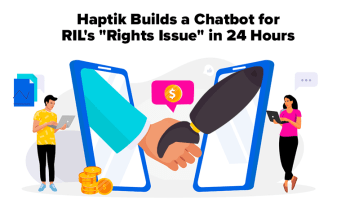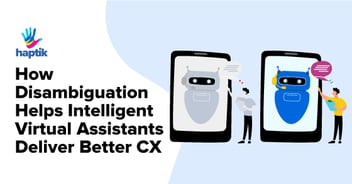4 Conversational AI Use Cases for Media & Entertainment Industry
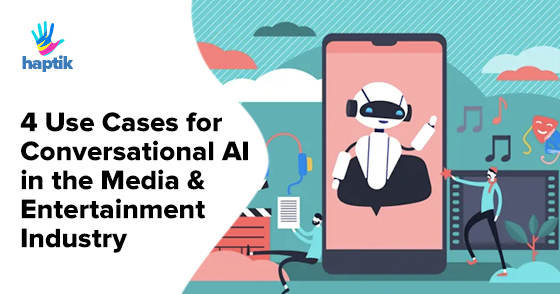
In an era where technology is revolutionizing every aspect of our lives, the Media and Entertainment industry is no exception. Enter the realm of Conversational AI, where the fusion of artificial intelligence and natural language processing is reshaping the way audiences engage with their favorite media offerings. Welcome to a world where audience engagement is taken to new heights.
From the silver screen to streaming platforms, from music to news, the power of GPT-enabled AI-powered chatbots and voice bots is enhancing the way we consume, discover, and interact with content. From promoting new releases to assisting viewers in their content exploration, Conversational AI is redefining the way media companies connect with their audiences.
This blog delves into the vast possibilities and intriguing use cases of Conversational Commerce within the Media & Entertainment industry, where data-driven technology meets the art of entertainment. Unleash the potential of personalized content recommendations, immersive customer interactions, and streamlined user experiences.
Let’s take a close look at some of the most interesting use cases for Conversational AI in the Media and Entertainment industry.
- Use Case 1: Customer Service
- Use Case 2: Branded Content
- Use Case 3: Advertising and Promotion
- Use Case 4: Product (Content) Discovery
4 Ways to Use Conversational AI for Media & Entertainment Industry
Use Case 1: Conversational AI for Customer Service
Where exceptional customer service reigns supreme, Conversational AI emerges as the ultimate solution. With 96% of consumers valuing customer support for brand loyalty and 72% expecting personalized assistance, media companies are turning to GPT-enabled AI chatbots for instant and personalized solutions at scale.
With the increasing demand for exceptional customer service,
- AI-powered chatbots and voice bots enable media companies to provide timely assistance and address customer queries promptly
- From delivering real-time news updates to offering recommendations based on individual preferences, Conversational AI enhances the overall customer support experience.
- Media and entertainment businesses can effortlessly meet the rising expectations of their audience, fostering loyalty and satisfaction in an industry driven by customer engagement.
READ MORE: Customer Support Chatbot
Haptik’s Conversational AI Success Stories
Haptik, a leader in Conversational Commerce Solutions, partnered with Dream11 to revolutionize their customer experience through a powerful GPT-powered Conversational AI chatbot. By providing swift responses to customer queries, the chatbot successfully managed a remarkable 30-fold increase in query volume. Haptik's expertise ensured prompt resolutions to common issues, seamless routing of complex queries, and impressive results, including a 10X return on investment, resolving over 1 million queries, and achieving an 84% automation rate.
Haptik developed a chatbot for Junglee Games, resulting in improved player engagement and reduced churn. The chatbot provided round-the-clock support, addressing customer inquiries promptly and saving significant man-hours. With a 76% automation rate and engagement of over 1 million users, Haptik's solution successfully enhanced the overall user experience, leading to increased customer satisfaction for Junglee Games.
Use Case 2: Conversational AI for Branded Content
Conversational commerce offers a powerful avenue for delivering branded content in the media & entertainment industry.
- AI chatbots leverage user data to personalize content recommendations, enhancing views and clicks while boosting customer satisfaction.
- By incorporating branded content within chatbot interactions, brands can establish an authentic connection and humanize their image.
- With a well-designed and engaging chatbot as a digital ambassador, the conversation becomes a captivating piece of content itself.
Furthermore, chatbots serve as active distribution channels, engaging users in conversations and motivating them to subscribe to regular updates, creating an effective delivery mechanism for branded content in the media & entertainment industry.
Here’s a look at the chatbot of the Washington Post below:
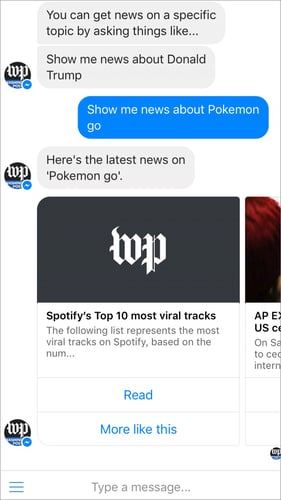
The Washington Post's chatbot delivers top news stories of the day, allowing users to swipe through headlines and access related content. Users can provide their zip codes during events like elections to receive location-specific results and updates.
Of course, Conversational AI in Media and Entertainment extends beyond text-based chatbots. With the growing popularity of voice-based interfaces like Amazon Alexa and Google Home Assistant, there's immense potential to create and distribute voice-based branded content.
For instance, "The Inspection Chamber," a BBC-produced interactive sci-fi/comedy-drama, is available on Amazon Alexa and Google Home. Described as "conversational radio," the series lets users engage with the story and characters through voice commands. By simply asking their smart speaker to "open the Inspection Chamber," audiences can participate in a next-generation, immersive storytelling experience.
Use Case 3: Conversational AI for Advertising and Promotion
Another unique application of chatbots within the industry is in marketing, advertising, and promotions. They can be leveraged as an integral part of a promotional campaign for an artist, book, movie, or even a TV show. For instance, just before the recent season of Game of Thrones hit media streaming platforms (such as Hotstar in India), the marketing team of the power-packed show deployed a neat chatbot on Facebook that took the form of major GOT characters (decided based on user input) that are widely loved by audiences.
Such a media marketing strategy can prove to be highly effective, since it can engage both ardent and casual followers of a media product. But the masterstroke lies in the fact that customers can engage with the chatbot based on their preferences. This effectively translates to customers engaging with the marketing campaign to make it more relevant and targeted for themselves, which contributes to a positive feedback loop that further increases their engagement!
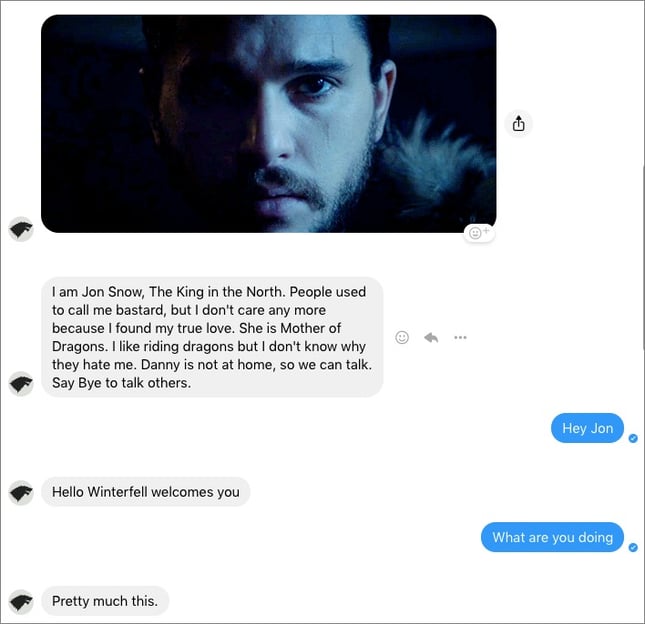
Such chatbots, paired with impeccable timing, have the potential to clock soaring press awareness. In the first week of the launch itself, the bot was picked up by all leading media publication houses such as Mashable, The Verge, CNet, and more. This resulted in about 3.92K social shares of press articles along with 5.5 million estimated coverage views! And it did not stop there. After the end of the first two weeks, the bot had handled over 20,000 conversations with 15,000 Game of Thrones fans around the world with an impressive average conversation time of nearly 5 minutes.
Use Case 4: Conversational AI for Product (Content) Discovery
Conversational AI revolutionizes content discovery by leveraging user preferences and past behavior. Users can even specify particular features of the product/content that they prefer and prioritize their options accordingly.
- By proactively notifying users about relevant media works, chatbots optimize search results and eliminate the need for manual searching.
- This technology empowers content creators by managing content lifecycles and accelerating production processes.
- AI chatbots offer an opportunity to promote evergreen content when traditional SEO strategies fall short, by understanding user needs and preferences.
- Conversational AI utilizes predictive analytics and modelling to offer personalized recommendations to users, leveraging data for maximum conversions and engagement.
Take the case of the Food Network chatbot that lets users easily discover relevant recipes from their website.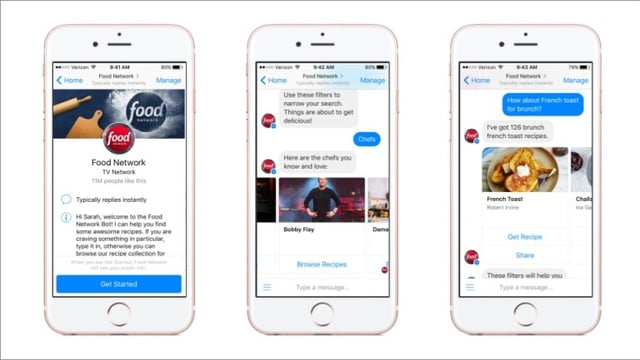
In this way, chatbots eliminate the need for users to interact with a passive multi-panel interface. They can directly interact with dynamic chatbots, share their preferences and receive highly relevant product/content recommendations. Users can even specify particular features of the product/content that they prefer and prioritize their options accordingly. Some experts even refer to such dedicated bots as content bots, whose sole purpose is to deliver content and not to perform tasks.
To Sum Up…
Media and Entertainment companies can tap into the power of Conversational AI to expand their offerings, improve user experiences, and grow their customer base. Haptik's AI chatbot solution is packed with features like two-way notifications and pre-built conversation workflows, using which companies can make their campaigns interactive and efficiently address customer inquiries. The support for multiple languages also expands viewership across regions, catering to diverse user preferences.
The applications of Conversational AI extend beyond customer service, with chatbots driving cost reductions and enabling personalized content recommendations. Whether it's content creation, promotion, distribution, or customer service, Conversational AI is the 'next big thing' that is reshaping the Media and Entertainment landscape, empowering companies to thrive in the digital era.
READ MORE: Live Chat Agent: Bringing a Human Touch to Conversational AI
Start Your Conversational Commerce Journey with Haptik!





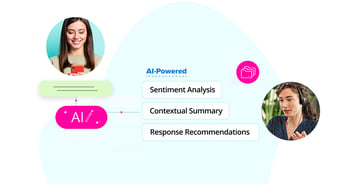
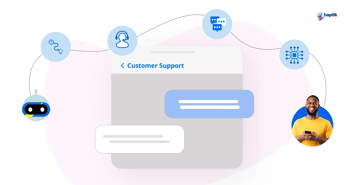






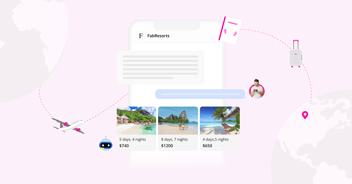
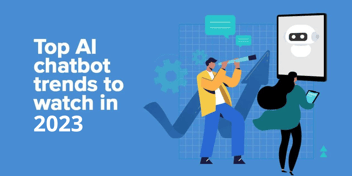

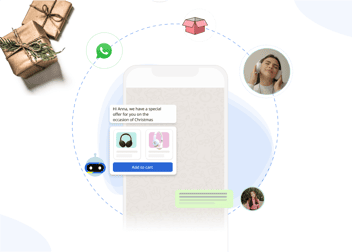
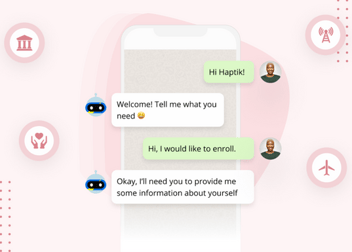
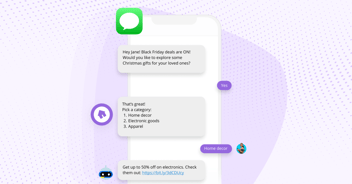

.jpg?quality=low&width=352&name=blog-banner-2%20(1).jpg)



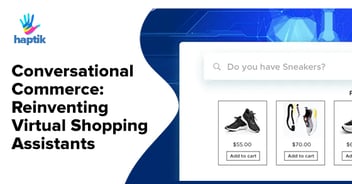

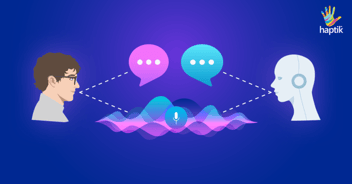
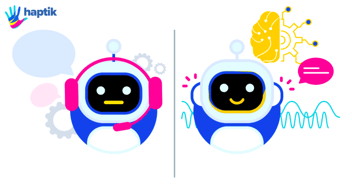
.png?quality=low&width=352&name=Untitled%20design%20(31).png)

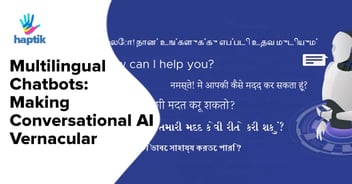



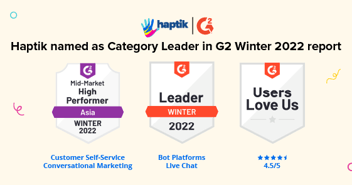

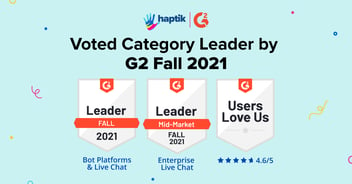
-1.png?width=352&name=BlogHeader2%20(3)-1.png)

.png?width=352&name=image%20(18).png)
-2.png?quality=low&width=352&name=image%20(11)-2.png)




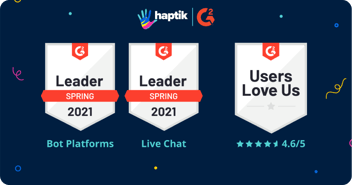
-1.jpg?width=352&name=Linkedin+%20Twitter%20(1)-1.jpg)




-1.png?width=352&name=LinkedIn%20(1)-1.png)
.png?quality=low&width=352&name=LinkedIn%20(3).png)


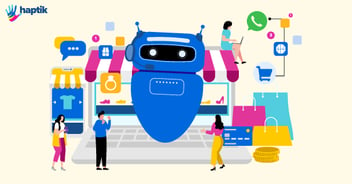

.jpg?width=352&name=sentiment%20(1).jpg)








